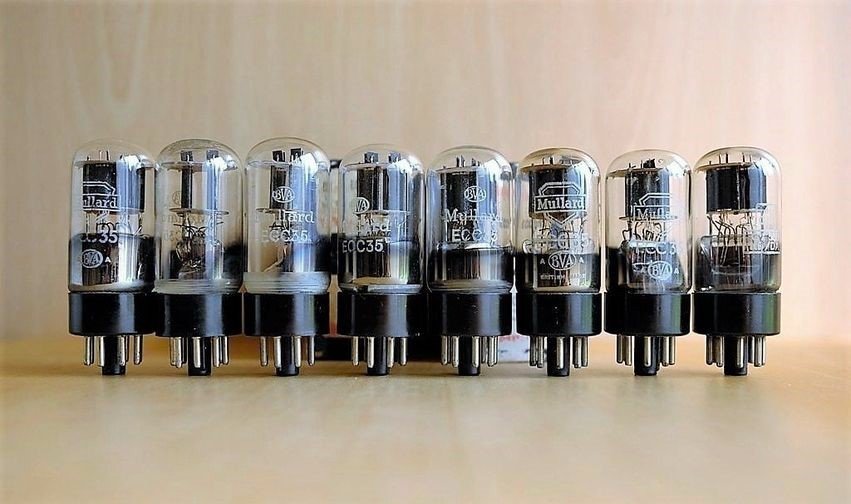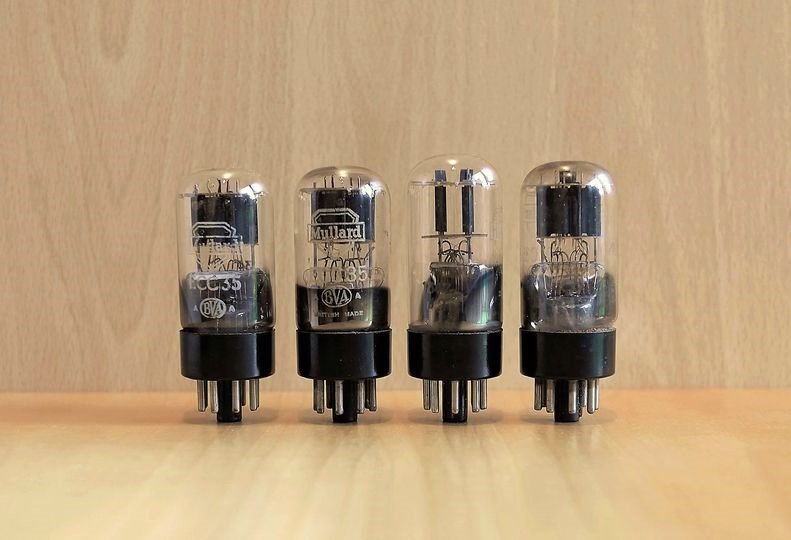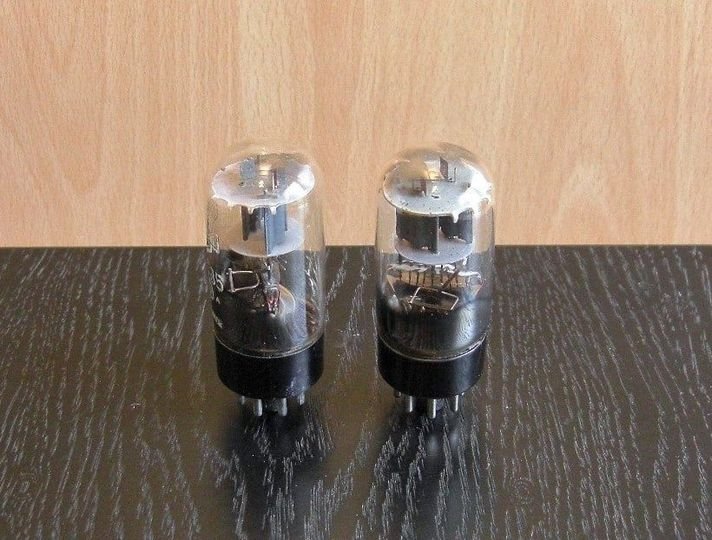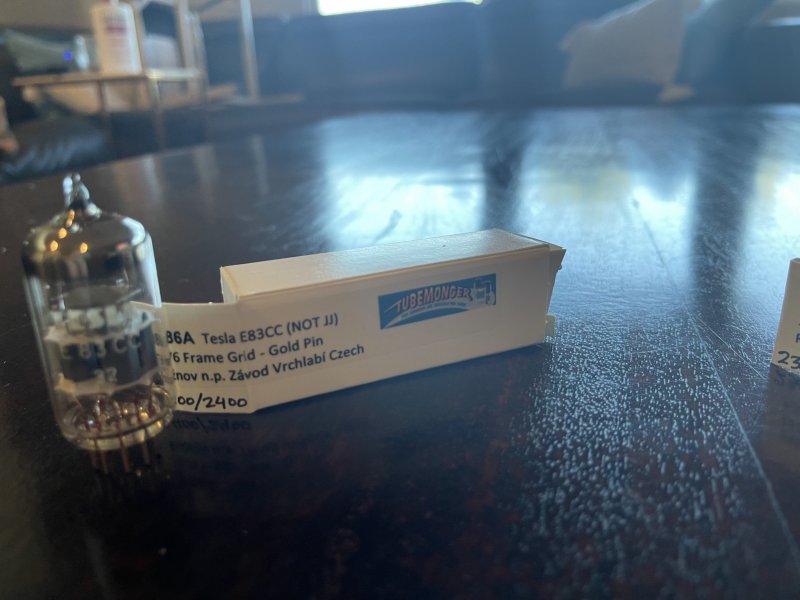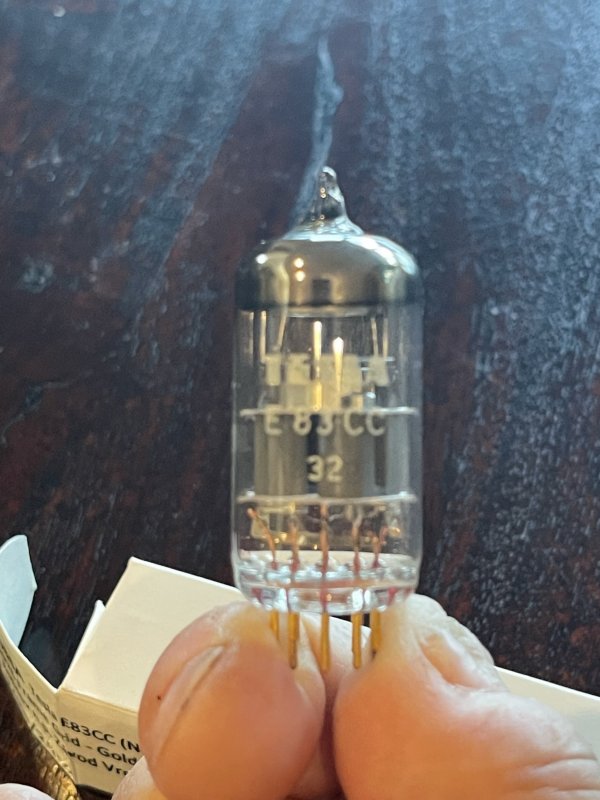My Tube Collection, Welcome to share yours
- Thread starter adrian cheng
- Start date
You are using an out of date browser. It may not display this or other websites correctly.
You should upgrade or use an alternative browser.
You should upgrade or use an alternative browser.
Last edited:
Steve williams
Site Founder, Site Co-Owner, Administrator
Hi AdrianTesla E88CCView attachment 91218
Is this the Tesla tube that is built in an original Telefunken factory and supposedly their answer to the the Holy Grail Telefunken ECC803S
I have to check my supply as I have 2 NIB Tesla tubes reported to be fashioned after the ECC803S
Hi SteveHi Adrian
Is this the Tesla tube that is built in an original Telefunken factory and supposedly their answer to the the Holy Grail Telefunken ECC803S
I have to check my supply as I have 2 NIB Tesla tubes reported to be fashioned after the ECC803S
I don't think there are anything relate to the ECC803 as these are only normal E88CC which I bought more than 30 years ago, Tesla did make ECC803 in the 60s but is only a copy of the original Telefunken ECC803S, that's as far as I know
Hi Steve, before I purchase some valves I need to know the la and gm ,if they are under 90 percent than I will not buying them and that's the reason why I'm only have 3000 more valves
Unfortunately we can have tubes that measure 95% of nominal GM and they are at the almost at the end of their life. It is why I only buy new tubes. Typical measurements can reject exhausted or dead tubes, but are a poor indicator of their use. British military engineers have developped special jigs during WW2 to measure expected tube life time, but this information seems to be lost.
Most genuine used Telefunken and Siemens tubes in the european market are pulled from old equipment - it is a lottery.
Unfortunately we can have tubes that measure 95% of nominal GM and they are at the almost at the end of their life. It is why I only buy new tubes. Typical measurements can reject exhausted or dead tubes, but are a poor indicator of their use. British military engineers have developped special jigs during WW2 to measure expected tube life time, but this information seems to be lost.
Most genuine used Telefunken and Siemens tubes in the european market are pulled from old equipment - it is a lottery.
But having a tube measure 95% and be at the end of its life is not the norm. And you can have new tubes fail after 6 months.
There are some tube types which have no good “new tube” options and for many tube types the older ones are far superior to the new tubes.
Steve williams
Site Founder, Site Co-Owner, Administrator
I have them I thinkHi Steve
I don't think there are anything relate to the ECC803 as these are only normal E88CC which I bought more than 30 years ago, Tesla did make ECC803 in the 60s but is only a copy of the original Telefunken ECC803S, that's as far as I know
Steve williams
Site Founder, Site Co-Owner, Administrator
A brand new tube right came out from the factory doesn't guarantee last for ages , a tube measure 60 % could last as long as a new one, that' only measurement figures which mean nothing to the tube's life, people buying new tubes only for rest assured the tubes is new and suppose last longer than a used oneUnfortunately we can have tubes that measure 95% of nominal GM and they are at the almost at the end of their life. It is why I only buy new tubes. Typical measurements can reject exhausted or dead tubes, but are a poor indicator of their use. British military engineers have developped special jigs during WW2 to measure expected tube life time, but this information seems to be lost.
Most genuine used Telefunken and Siemens tubes in the european market are pulled from old equipment - it is a lottery.
Steve williams
Site Founder, Site Co-Owner, Administrator
Steve williams
Site Founder, Site Co-Owner, Administrator
Steve williams
Site Founder, Site Co-Owner, Administrator
Steve williams
Site Founder, Site Co-Owner, Administrator
Based upon my experience I completely agree with both of your commentsBut having a tube measure 95% and be at the end of its life is not the norm. And you can have new tubes fail after 6 months.
There are some tube types which have no good “new tube” options and for many tube types the older ones are far superior to the new tubes
But having a tube measure 95% and be at the end of its life is not the norm. And you can have new tubes fail after 6 months.
The main issue is that we do not have the initial value of GM of the tube and this parameter has a very large tolerance - the testers just show an average value. We measure 95% and it can be 70% in reality. I found that some tubes loose their sonic quality and still measure as new. IMHO noise is sometimes more important than GM - it is why I always look at the noise spectra of critical tubes.
There are some tube types which have no good “new tube” options and for many tube types the older ones are far superior to the new tubes.
Now it is a question of individual opinion - it depends on equipment and listener preference.
A brand new tube right came out from the factory doesn't guarantee last for ages , a tube measure 60 % could last as long as a new one, that' only measurement figures which mean nothing to the tube's life, people buying new tubes only for rest assured the tubes is new and suppose last longer than a used one
Yes, as I said, the typical tester measurements are a poor predictor of tube age. But tube knowledge and statistics tell us that most tubes age from cathode evaporation and this is the critical aspect to look at. At less we expect that a quality new tube has all the cathode material and most of them are expected to last its typical life. As always IMHO, YMMV.
Similar threads
- Replies
- 10
- Views
- 619
- Replies
- 4
- Views
- 481
- Replies
- 49
- Views
- 3K
- Replies
- 144
- Views
- 11K
| Steve Williams Site Founder | Site Owner | Administrator | Ron Resnick Site Owner | Administrator | Julian (The Fixer) Website Build | Marketing Managersing |




